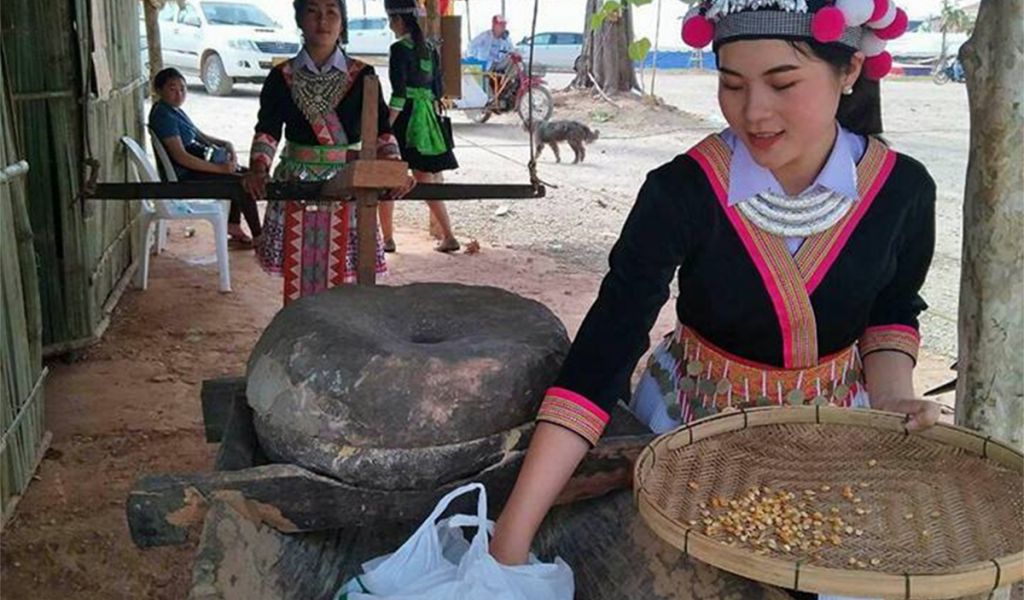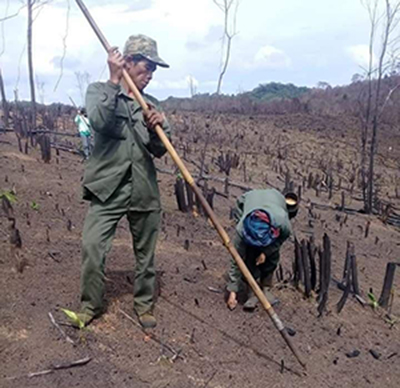The Hmong people and their plants
In Hmong legend, opium is often associated with tobacco, both plants are said to have sprung from the body of a young woman who die of love
Agrobiodiversity

phakhaolao. la
- The Hmong migrated from southern China to the mountain regions of northern Laos in the 19th century, where they are now the largest ethnic group. Their way of life, based on slash and burn agriculture, means they have not moved their villages regularly when their crops have exhausted the soil.

- The Hmong’s staple crops are rice and maize, together with opium poppies (Papaver somniferum, ya fin in Lao, Yeeb in Hmong), once grown as a cash crop but which are now being replaced by fruit and vegetable, Because the Hmong use opium for both medicinal and social/relaxation purpose, its consumption is governed by strong customs and traditions.
- In Hmong legend, opium is often associated with tobacco, both plants are said to have sprung from the body of a young woman who dies of love
- Of course, the Hmong grow many different food plants, including cereals, squashes, legumes, tubers, sugar canes, chili peppers, ginger, and fruits.
- Other plants are grown for utilitarian purposes. The Hmong makes most of their textile hemp. Which thy produced to Laos in the 19th century.
- They color their clothes with among other dyes, natural indigo extracted from plants such as Indigofera tinctorial. Further decoration is added using embroidery and the balk technique, which they are the only ethnic group in Laos to use. They also harvest a wide variety of wild plants for culinary, building and medicinal purposes. In fact, Hmong shamanistic healers are widely showed for their efficacy and are consulted by people from all ethnic groups

source: Phatadke
